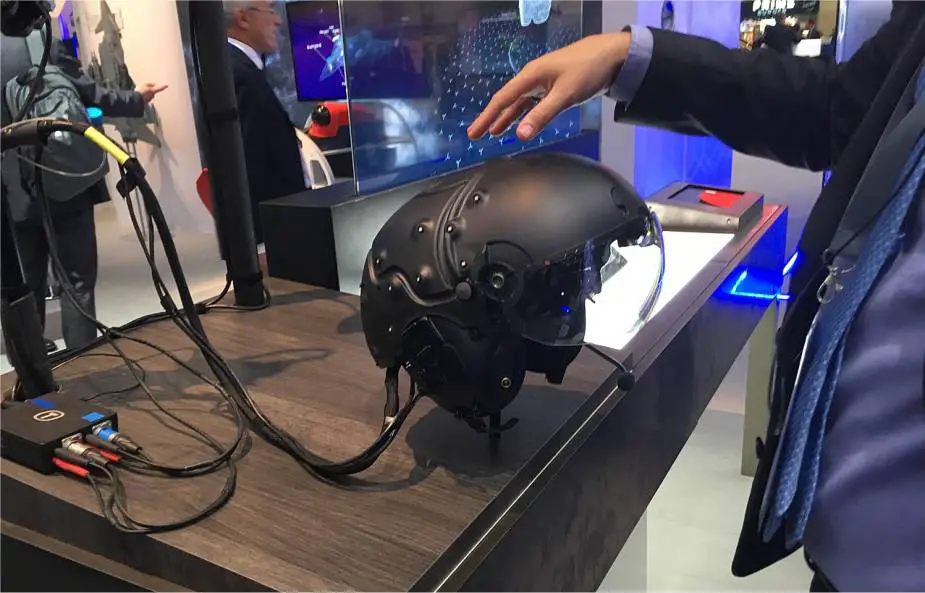Breaking news
Russian Air Force pilots of MiG aircraft will be equipped with helmet-mounted display in 2021.
According to information released by the Russian Press Agency, TASS on June 16, 2020, pilots of the Russian Air Force pilots will be equipped in 2021 with local-made helmet-mounted target acquisition and display (HMD) systems for MiG planes. This new helmet is produced by the Russian company Electroautomatics Experimental Design Bureau.
Follow Air Recognition on Google News at this link
 Helmet Mounted System Striker II from BAE System on DSEI-2019. (Picture source Wikipedia)
Helmet Mounted System Striker II from BAE System on DSEI-2019. (Picture source Wikipedia)
The Electroautomatics Experimental Design Bureau started the deliveries of helmeted-mounted target acquisition and display systems (HMD) for aircraft of the Russian Aerospace Force’s tactical aviation back in 2016 to replace Ukrainian versions. In particular, the domestically produced helmet-mounted displays were used to substitute the imported Ukrainian Sura systems and their modifications earlier produced by the Arsenal Design Bureau on Su-27SM3, Su-30SM and Su-35S aircraft.
A helmet-mounted display (HMD) is a device used in aircraft to project information to the pilot's eyes. Its scope is similar to that of head-up displays (HUD) on an aircrew's visor or reticle. An HMD provides the pilot with situation awareness, an enhanced image of the scene, and in military applications cue weapons systems, to the direction their head is pointing. Applications that allow the control of weapon systems are referred to as helmet-mounted sight and display (HMSD) or helmet-mounted sights (HMS).
With this new helmet, Russian Air Force pilots will have unique sighting precision, rapid target acquisition and day/night capability. The helmet is designed to present flight imagery and information. It provides a method of presenting crucial data without worsening the problem of an already crowded cockpit. The HMD can also provide night vision information to the pilot for nap-of-the-earth pilotage, target acquisition, weapons aiming and day-time symbology.
In 1985, the U.S. Army fielded the AH-64 Apache and with it the Integrated Helmet and Display Sighting System (IHADSS), a new helmet concept in which the role of the helmet was expanded to provide a visually coupled interface between the aviator and the aircraft.


























